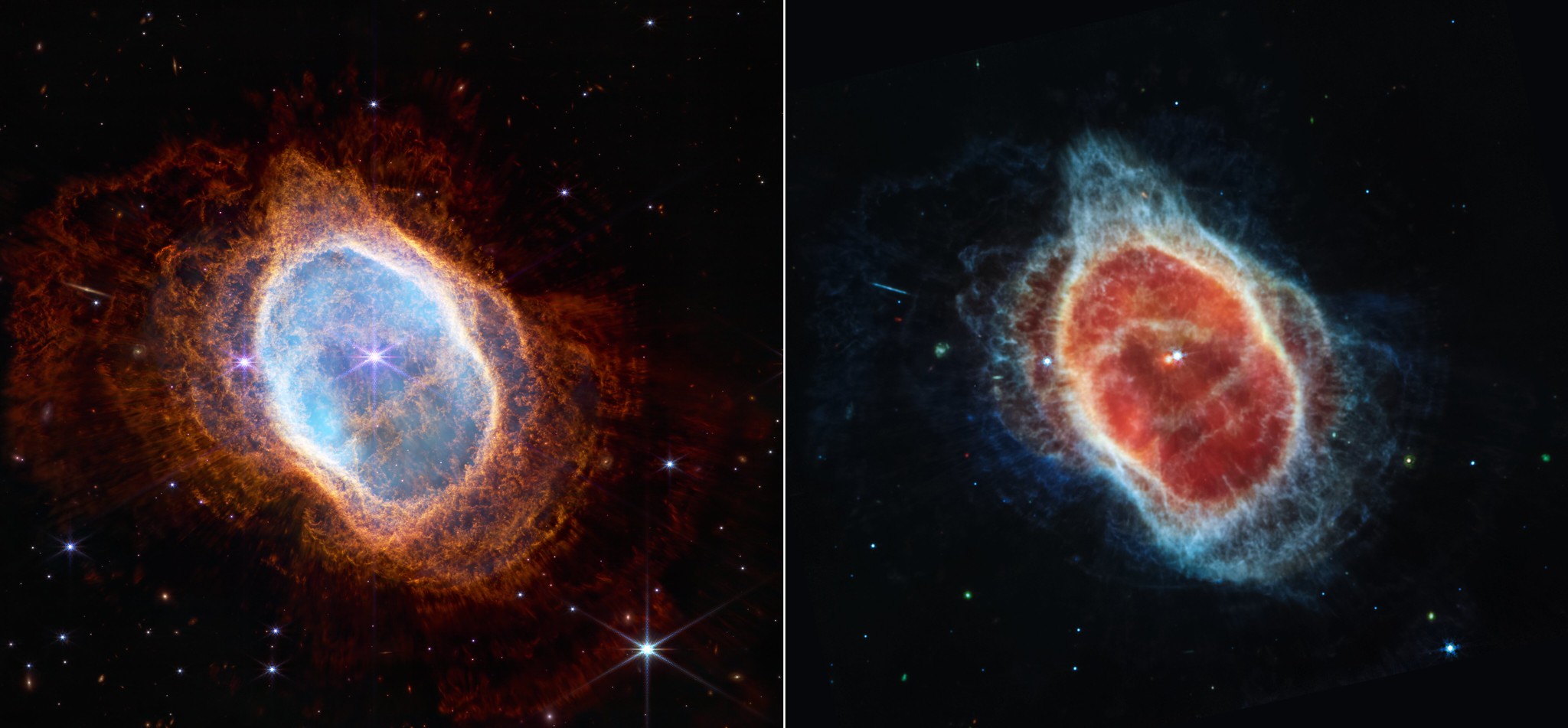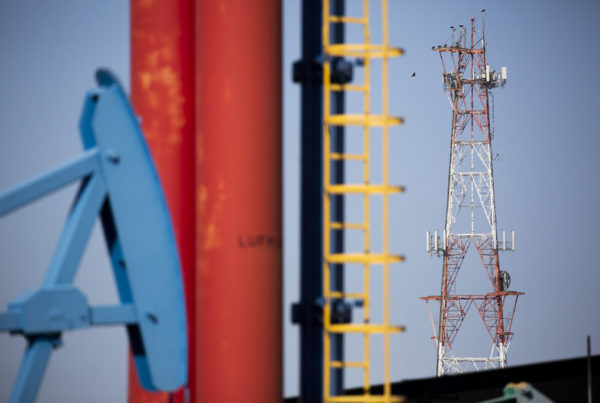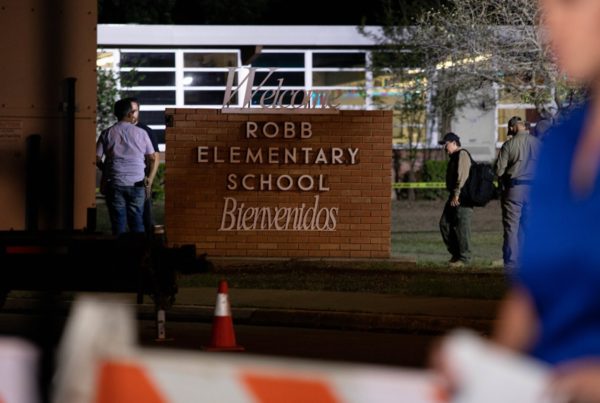There are some engineering achievements that inspire, but relatively few that prompt us to rethink our place in the universe. But that’s just one reason Tuesday’s release of images from NASA’s new James Webb Space Telescope is generating such excitement.
Scientists hope the $10 billion project will shed light on the mysteries of how the universe began. The first image from the telescope was revealed Monday at the White House, and it showed the deepest infrared view of the universe to date. Steven Finkelstein, an associate professor of astronomy at the University of Texas at Austin, co-leads a team of scientists using the telescope to make detailed observations in deep space. Listen to the interview above or read the transcript below.
This transcript has been edited lightly for clarity:
Texas Standard: As someone whose work involves gathering and analyzing data collected by the Webb telescope, what is your initial reaction to some of these initial images?
Steven Finkelstein: They’re amazing. Looking at that image of the galaxy cluster last night, especially once we could get our hands on it on a computer and zoom in and paint around, the sheer number of galaxies you can see, the detail you can see – it just blows us away.
I was trying to think of a way to describe this, and words kind of fall short. But that initial image in particular, I was thinking this sparkling bowling ball and you zoom in very, very close and you turn on disco lights in the room and just a constellation – no pun intended – of colors. Sometimes what are described as galaxies look like streaks. I gather that has to do with the gravitational pull against some of what those images represent?
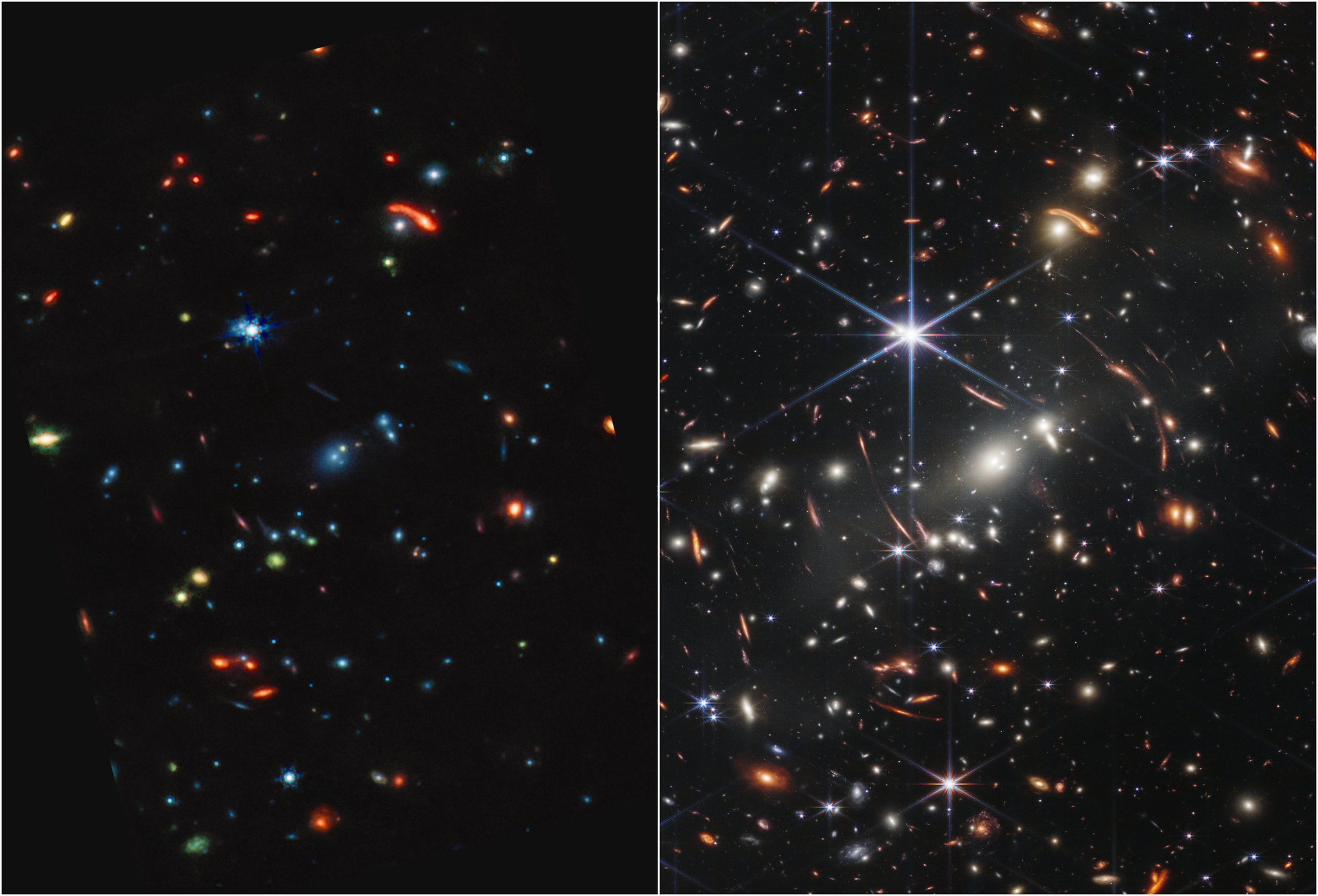
The deepest and sharpest infrared image of the early universe ever taken. The Webb Space Telescope was able to capture this image in less than one day.
The NIRCam view is Webb’s first released image.
(NASA’s James Webb Space Telescope)
So there is a phenomenon known as gravitational lensing. So what we’re looking at in this image that we saw last night from the president is a giant galaxy cluster. So this is sort of a metropolis of galaxies that is, in human terms, fairly far away from Earth. But in astronomical terms, it is not that far away. And there’s a lot of mass concentrated here.
And when you look through the mass of that galaxy cluster, it actually bends or magnifies the light of more distant background galaxies. And it stretches them out so that you can take something that would otherwise be very small in the sky and see it in much greater detail. And you can see some of them look like little beads on a string. Those are individual star clusters in those galaxies, which otherwise we wouldn’t be able to see. They would look like one dot, they’re stretched out. So we can see all of this amazing detail.
So that explains why you’re seeing sort of extended colors. But I’m struck both by the enormous number of colors and the sheer beauty of some of these images. Some of them look like album covers from the 70s – so fantastical they couldn’t be real. And yet here it is. What does this tell you about what we’re actually seeing? If you were standing out in space – if that were possible – and you were looking into the galaxy and you had that distance vision, is that what you’d see? Or are we seeing sort of colorized wave forms here mixed in that are sort of invisible to the human eye?
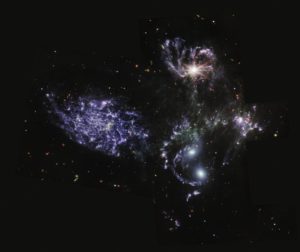
In Stephan’s Quintet, we see five galaxies, four of which interact. (The left galaxy is actually in the foreground!) These colliding galaxies are pulling and stretching each other in a gravitational dance.
(NASA’s James Webb Space Telescope)
The database is optimized for infrared light. So this is light that’s a bit better than our eyes can see. And so all of the wavelengths of light that we are seeing here have basically been digitized and turned into visible wavelengths. But it’s what we would call a false color image. And so things that look red in that image, if you could see infrared wavelengths with your eye, they would look red. So we sort of take the bluest colors Webb can see, make them blue, and visible green – the sort of middle colors would be green. And the red colors would be red. And so it’s a reasonable version of what you might see if one could see in the infrared.
Am I correct in saying that we’re actually now able to witness, in a sense, the birth and death of stars? I mean, is this something that that now is achievable?
Absolutely. So we’ve been able to see some of those events before, but now we can see them in greater detail. For example, one of the images just released, the Southern Ring Nebula, is a view of a stellar death. And we’ve imaged that with Hubble – and it looked, of course, amazing – but now when you look at the Webb image, you can see all of this, I think they called it foaming, in the clouds around this stellar explosion. And it’s that level of detail that you could never see before that can give scientists insights into how stars explode, why they explode, and how their explosions affect the regions of the galaxy around them.
Some have used the word ‘revolutionary’ to describe some of these images and what observations can be made using this telescope. Do you agree with that? How big of a deal is this for science?
It’s a huge deal. It’s definitely revolutionary. The mirror of the telescope is seven times larger than Hubble’s. So that means it can collect seven times more light. The instruments are more efficient. They’re optimized for the infrared. There’s a lot to learn, both sort of near and far. And so, astronomers are going bananas. Everybody is extremely excited about this.


